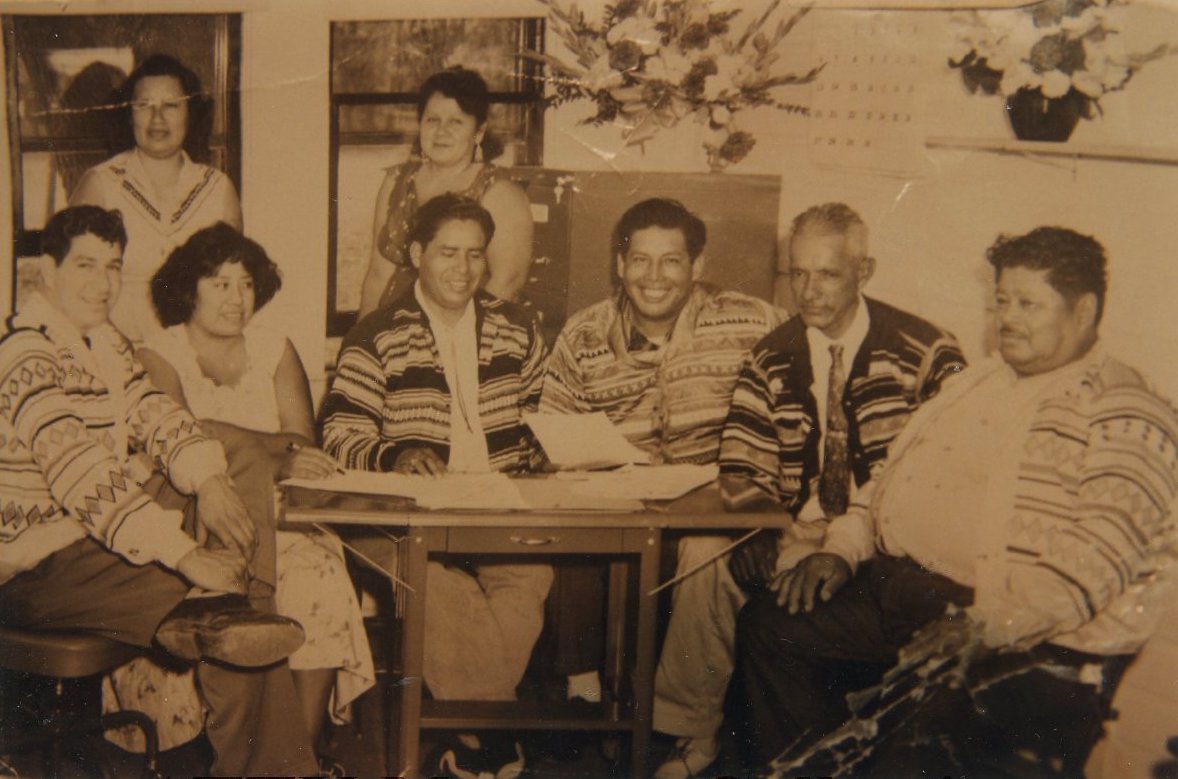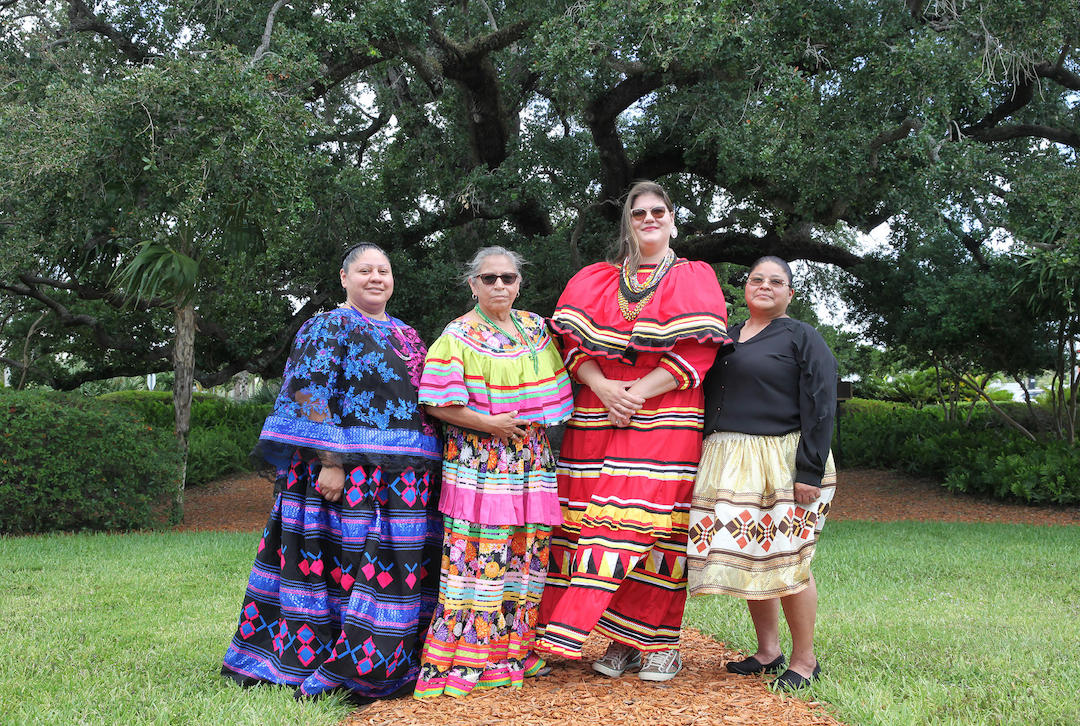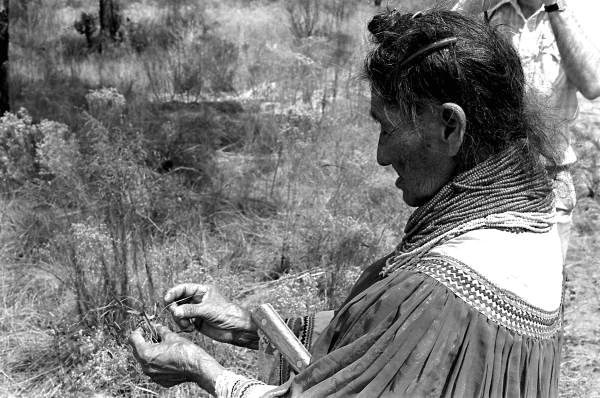
Healing Hands: The Remarkable Life of Susie Billie
Happy Friday! For the latest installment in our Women’s History Month Series, we look at the life and legacy of Susie Jim Billie (Panther Clan). Born around the turn of the twentieth century, Billie was a revered Seminole elder and medicine woman. This week, we share her life and dedication to preserving traditional medicine and Seminole healing. At one point one of the oldest Seminole elders, she experienced a significant amount of change during her lifetime. Thus, we also seek to understand her unique perspective and knowledge gained through over a century of life experiences.
In our featured image, you can see a close up of Susie Jim Billie as she gathers medicinal herbs in 1985. The photo series was taken by Owen Blanton, and accompanied by an interview which was produced in part for the Florida Folklife Award reception. You can find a few minutes of that interview online here. Blanton interviewed Billie, who only spoke Mikasuki, with assistance from her granddaughter Jeanette Cypress, who acted as translator. It is important to note that throughout this blog post, we will quote Susie Jim Billie a number of times. All of the quotes included were translated during the interview process from her original Mikasuki. When available, we have included the translator’s name.
Below, Mary Jene Koenes assists Susie Jim Billie at the rodeo grounds during the 13th Annual Veterans Day Celebration, Big Cypress, November 9, 2000. Billie wears traditional clothing, including a cape and numerous beaded necklaces.
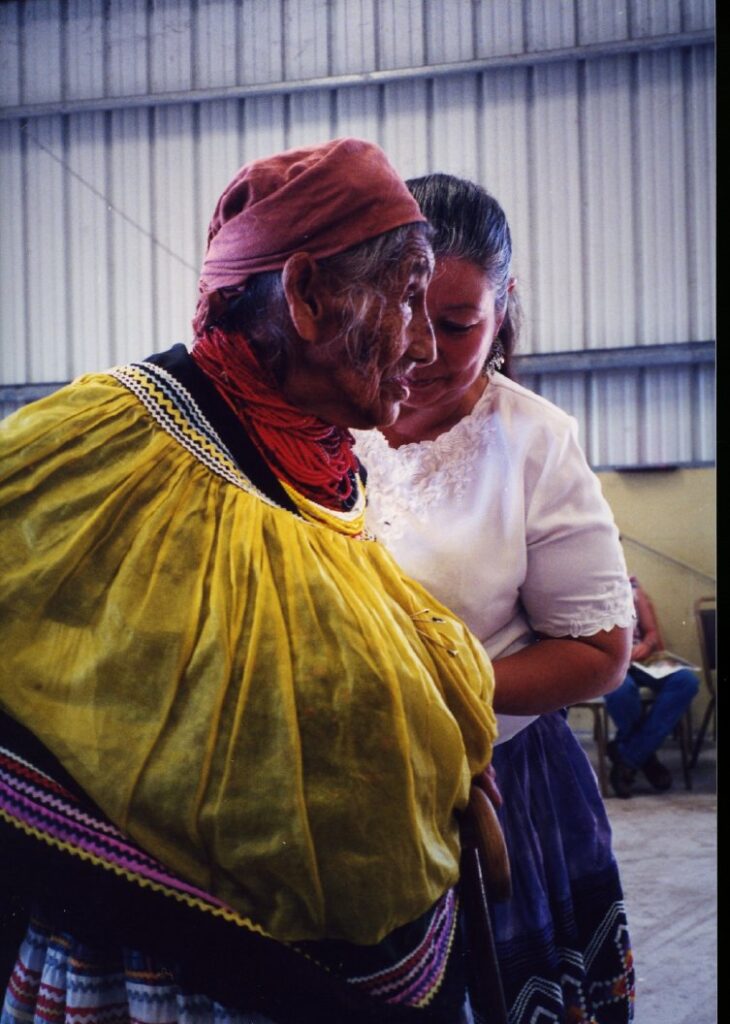
2016.14.52, ATTK Museum
Preserving Traditional Medicine
Susie Jim Billie came from a long line of medicine men and women, learning traditional medicine and healing from her father, grandfather, and uncle. Billie’s brother, Buffalo Jim, was also a respected medicine man, even testifying before Congress in defense of Seminole hunting rights. Born in Collier County, she spent most of her time at her home on the Big Cypress Reservation, practicing medicine. Her work was twofold; she was dedicated to helping her people and protecting traditional Seminole medicine. “I was taught that when God created the earth, he gave people the herbs to help other people with,” Billie stated in a 1985 interview (May 24, 1985, The Miami Herald).
Throughout the last twenty years of her life, Billie participated in several programs and interviews with the intention of preserving traditional knowledge. In 1984, she would travel to the Library of Congress to verify the accuracy of some of their tapes of Native American chanting. It was the first time she had ever been on a plane (May 24, 1985, The Miami Herald). Billie would also, through a translator, participate in a number of interviews about her work, as well as her memories of the Everglades in the early 20th century. These included both newspaper articles and recorded interviews for the Florida Folklife Apprenticeship Program. A number of these interviews are available online through the Florida Memory Project.
Passing Down Knowledge
Billie officially participated twice as a master artist in the Florida Folklife Apprenticeship Program. Through this program, she passed her knowledge of traditional medicine and chants on to her daughter, Agnes Cypress, and Mary Johns. Unofficially, she continued her family tradition of passing down knowledge as widely as she could. She taught medicine to her nephew, Sonny Billie, and granddaughter Jeanette Cypress. Sonny Billie would become a strong medicine man, and eventually Miccosukee Tribal Chairman. Today, Jeanette Cypress is an Afachkee School culture teacher on the Big Cypress Seminole Indian Reservation. She also participated in the Seminole Video Project, along with her mother and grandmother, in 1984. In 1985, Jeanette Cypress noted Susie Jim Billie’s dedication to remembering and preserving her chants and medicine. “I asked her if I could make tapes of some of the chants, so I could study at home. She said OK, but that the best way was to sit with her and learn it there. She practices all time. I see her sitting there, and her lips move, and her hands move, and she’s practicing the chants. I think she’s afraid that since she’s getting old, she’ll forget them” (May 24, 1985, The Miami Herald).
Below, you can see Susie Jim Billie with her daughter Agnes Cypress gathering herbs and plants in 1985.
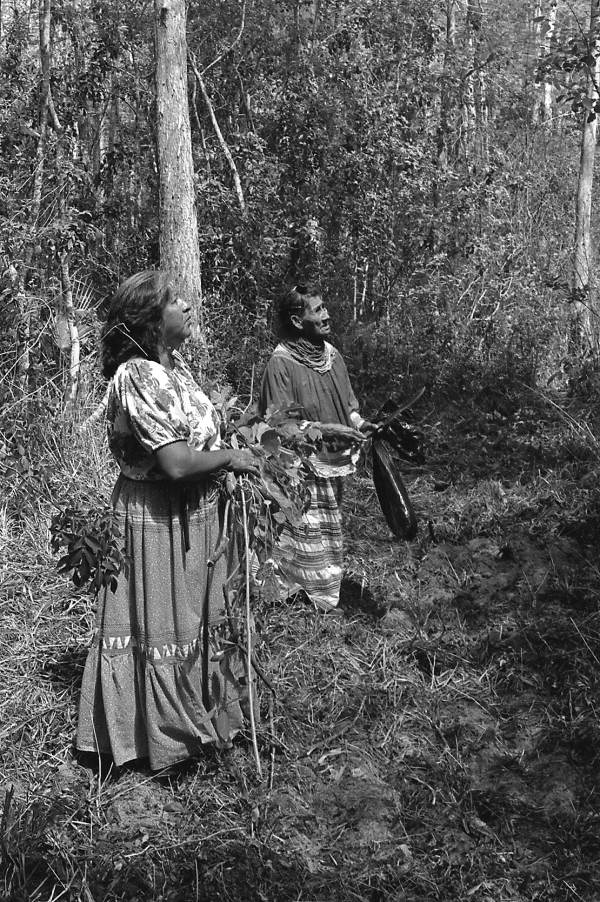
Seminole Video Project
In 1984, Billie was interviewed as part of the Seminole Video Project, which was produced by a collaboration between the Florida Folklife Project and WFSU-TV. It was published as part of the “Four Corners of the Earth Documentary.” In it, Billie was shown teaching other Seminole women how to gather medicinal plants and herbs. Ethel Santiago, who was the main focus of the documentary, stressed that: “You should get the knowledge from the person face to face, who is breathing, and you are breathing, and get that knowledge as a wise and strong medicine, but when its put on a tape, tape take everything. When you get it from a tape your medicine will never be that strong” (23:00).
In the documentary, Billie also shares through a translator that: “a woman’s place is by the fire. It is up to each woman to control her own life and carry out the cooking. It is her place to see that the meat is prepared for drying, and if its corn she should know how to prepare that too. When a woman grows old (like she is today) with great-great grandchildren, it is her place to have a home and have a fire going…A Seminole woman must never stop teaching what she has learned in childhood so that she will know how to continue to be a Seminole” (17:45).
For Seminoles, the fire is the heart of the home, and Billie’s statement stressed that it is the woman’s role as matriarch to pass on the knowledge and lead her family in every moment and opportunity she has.
Florida Folklife Award
The Florida Department of State awarded Susie Jim Billie the Florida Folklife Award in 1985. In fact, Billie and the other 1985 recipients were the first to receive the award, which began that year. She received the award based on her efforts to preserve traditional Seminole culture and medicine. This included her expertise as a traditional medicine woman, which encompassed “not only the herbal remedies for physical ailments, but the songs, chants, and ritual expressions that lent power to cures as well.” Billie was well known for her extensive knowledge of plants, songs, chants, and healing rituals.
“’She’s never had any kind of award,’ says Jeanette Cypress, granddaughter ‘so she doesn’t know what this is all about’” (May 24, 1985, The Miami Herald). But, the award was well-earned. Billie dedicated her life to passing on her knowledge to her people, helping them heal, and ensuring that the medicine would continue long after she was gone.
Below, you can see the 1985 winners of the Florida Folklife Award. Susie Jim Billie sits to the far left.
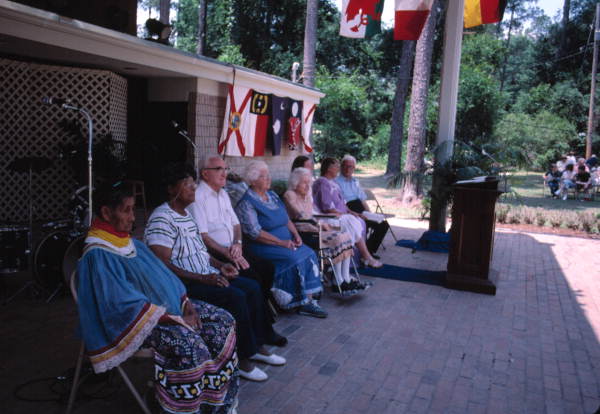
State Archives of Florida
Family and Legacy
Billie had eight children, and numerous grandchildren and great-grandchildren. In an interview in 1995, Billie noted her wishes for her family, stating that: “I hope everyone is successful and happy even when I am gone. I try not to think negative thoughts too much about my family, for it makes me sad. I want good for all of my grandchildren, and their children” (2018.21.89, ATTK Museum). Jeanette Cypress translated Susie Jim Billie’s words. Family focused, she also shared her favorite memories from her childhood, learning from her mother and father. It is apt in many ways that she continued to pass her knowledge down through her family and her tribe, ensuring her legacy lived even when she was gone.
Below, Susie Jim Billie is seated in a maroon chair. Agnes Cypress (daughter and apprentice) is to her right and Jeanette Cypress (granddaughter) is kneeling on her left.

2015.6.29422, ATTK Museum
Susie Jim Billie dedicated her life to preserving, sharing, and respecting her cultural past and traditional medicine. Her knowledge of plants and herbs, as well as chants and songs, were a lifeline of healing for her people, and she could not let them be lost.
When the medicine is gone, she stated in 1985, “That would mean it’s almost the end of the world, because we have been taught that toward the end of the world, most of the knowledge and things that people have learned will start to disappear.” But there is hope in the learning. Even as an elder, she acknowledged that she could never know everything. “As long as there are people to teach it, you can always learn more” (May 24, 1985, The Miami Herald).
Interested in other installments from this series? Check our previous posts on Ada Tiger, Lorene Bowers Gopher, and Laura Mae Osceola.
Author Bio
Originally from Washington state, Deanna Butler received her BA in Archaeological Sciences from the University of Washington in 2014. Deanna moved to Florida in 2016. Soon, she began working for the Seminole Tribe of Florida’s Tribal Historic Preservation Office. Deanna was the THPO’s Archaeological Collections Assistant from 2017-2021. While at the THPO, Deanna worked to preserve, support, and process the Tribe’s archaeological collection. She often wrote the popular Artifact of the Month series and worked on many community and educational outreach programs. She lives in Lakeland, FL with her husband, two sons, and dog.


